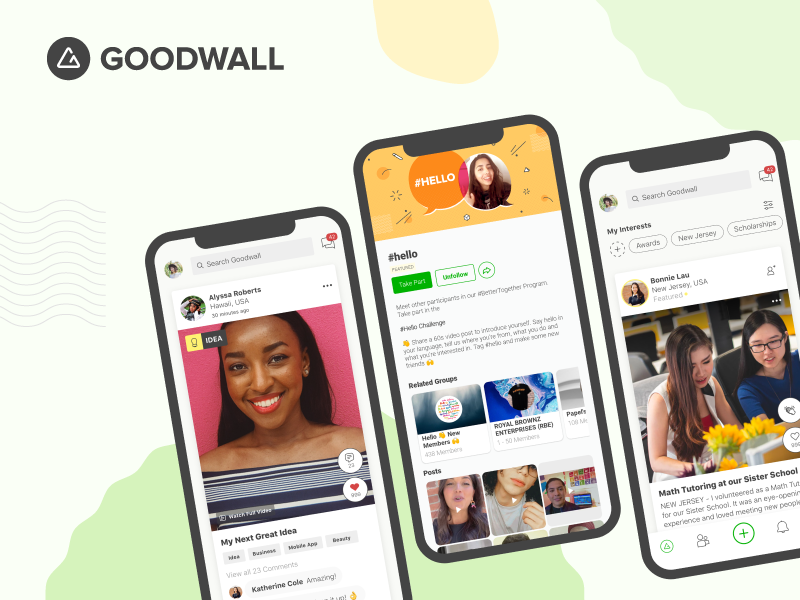We’ve all heard people tell us that we should recycle more, turn off the lights before we leave the house, and pick up after ourselves.
However, how does pollution affect the environment and why is it such a serious topic?
The fact is, there are a number of things you should know about how pollution affects the planet.
If you’re ready to do your part in keeping the planet clean, it’s time to take a closer look at how pollution hurts the environment.
Let’s jump into a few different ways this happens!

Want to Stay Inspired Each Day?
Sign up to Goodwall!
- Connect with like-minded people from 150+ countries
- Post accomplishments and get encouraging feedback
- Find support when you’re in a rut
Download the app now to get started for FREE!
How Pollution Hurts the Environment: Air Pollution
One of the main types of pollution that our planet faces is air pollution. This type of pollution is caused by two different types of pollution: primary and secondary pollution.
Let’s take a look at each of these types of pollutants.
Primary Pollutants
Primary pollutants are pollutants that are emitted into the air directly from their source. Most primary pollutants are associated with burning fossil fuels for transportation and electricity.
These types of pollutants include dangerous gases such as nitrogen oxide, carbon monoxide, and hydrocarbons that are produced when burning fossil fuels.
Another type of primary air pollution is produced when people participate in agricultural activities. Ammonia, pesticides, herbicides, and fungicides all pollute the air and can cause pulmonary and heart disease.
Secondary Pollutants
Secondary pollutants are a little bit different from primary pollutants, but they’re just as harmful. These types of pollutants are produced when primary pollutants react with the atmosphere and create new chemicals.
One common type of secondary pollutant is the gases produced when car exhaust fumes rise into the air. Those chemicals react with the air we breathe to create even more harmful gases.
Another source of secondary pollutants comes from fertilizer used in agricultural activities. Fertilizers interact with particles in the air to produce toxic chemicals that damage the lungs when we breathe.
Note: We can also classify pollutants into point source pollution and nonpoint source pollution.
Related Read: 10 Ways to Support the SDGs Without Spending Any Money
The Dangers of Air Pollution
So, now that you better understand primary and secondary air pollutants, let’s talk about the dangers of air pollution. There are several ways that air pollution affects both humans and animals.
For one, air pollution increases the risks of breathing problems, heart failure, and irritation of the eyes and throat. On top of that, air pollution can cause reproductive failure and birth defects in animals.
Air pollution harms the environment by allowing toxins to enter the water system. From there, these pollutants enter streams and rivers when rainfalls, harming fish and damaging ecosystems in these environments.
Finally, many air pollutants such as hydrochlorofluorocarbons and halons are depleting the ozone layer. This layer protects harmful ultraviolet rays from entering the planet and destroying plant and animal life. These include indoor air pollution problems, as well.
It’s important to reduce your carbon footprint in order to prevent air pollution and help keep our planet and our society healthy. That way, we can continue to enjoy the life we know and love for many more years!
How Pollution Affects the Planet: Water Pollution
Air pollution isn’t the only type of pollution out there. Another major type of pollution is water pollution. This type of pollution is caused mainly by sewage, fertilizers, and wastewaters.
What happens in water pollution is that these chemicals and nutrients enter the water system and make it undrinkable and dangerous for plant and animal life. In turn, this affects the ecosystem of the area and kills off important organisms.
One way that these pollutants enter the water system is when rainwater washes fertilizers and pollutants off crops. The rainwater then drains into wells, streams, and other water sources and causes damage.
On top of that, industrial waste such as oil spills, mercury, sulfur, and phosphates are often dumped directly into water sources. This kills ocean life and harms human populations as well.
Related Read: 25 Small Acts You Can Do to Have a Great Impact
Water Pollution and Humans
So, we know what water pollution is. However, how is it actually affecting our health? And, why is it such a big deal?
One major issue caused by water pollution is that disinfectants are often flushed into drinking water. When these are combined with toxic algae, the pollution leads to the creation of dioxins. Dioxins are chemical compounds that cause cancer and reproductive issues.
Another serious issue caused by water pollution is something called blue-baby syndrome. This happens when babies drink water that’s contaminated with nitrates and are unable to breathe properly. If untreated, it can lead to early death.
Water Pollution and Animal Life
The biggest issue caused by water pollution is that it leads to the death of water creatures. This, in turn, disturbs the food chain and throws off the balance of different fish and organisms in an area.
On top of that, nutrient pollution in a stream, lake, or river can create toxins that kill off fish. Without enough fish in the water, it can become permanently soiled and the entire ecosystem can collapse.
It’s important to take climate action to put a stop to these impacts on both humans and animal life. Otherwise, our planet as we know it is going to change drastically for the worse.
Related Read: 55+ Best Climate Change Quotes to Inspire Action for the Environment
How Pollution Affects the Environment: Land & Soil Pollution
Land pollution is just as harmful as air and water pollution. This type of pollution refers to the destruction of land and soil thanks to human activities. Typically, land pollution occurs when humans use herbicides and pesticides on crops, exploit minerals in mining, and dump waste.
On top of that, underground sewage systems, landfills, and wastewater discharge can lead to soil and land pollution. Over-grazing and over-farming also deplete the land of nutrients and cause pollution in the soil.
Why Land and Soil Pollution Is Harmful
So, why are these types of pollution so harmful? Well, contaminated land and soil can lead to cancer, respiratory issues, and skin problems both in humans and in animals.
Typically, toxins come into contact with animal and human life by consuming plants grown in polluted soil. It can also occur when people consume water or plants that have been impacted by water or air pollution.
The worst type of land and soil pollution, however, comes in the form of deforestation. When deforestation occurs, soil erodes and ecosystems are destroyed.
How Pollution Harms the Planet: Noise & Light Pollution
One type of pollution that many of us don’t think about is noise and light pollution. These types of pollution can have a serious impact on humans and on the environment. Let’s take a look at each one.
Noise Pollution
Noise pollution is an environmental pollutant that is caused by many different types of activities. These include social events, transportation, household activities, and commerce and industry.
In humans, noise pollution can cause hearing loss, sleep deprivation, headaches, anxiety, stress, and irritability. In animals, submarines and oil drills have been associated with causing death and injury of marine life such as whales.
Following these Earth Day tips can help you reduce noise pollution and have a positive impact on your environment. That way, we can continue to enjoy our planet the way we deserve.
Light Pollution
Another source of pollution is light. Light pollution is caused by the use of artificial lights in excess and for long periods of time during the nighttime. Some common sources of light pollution include airports, sports grounds, electronic billboards, residential areas, and public places.
When there is too much light in the environment, it can lead to eye strain and stress and can cause damage to our eyes. Plus, it can deplete our levels of melatonin making it tough for us to fall asleep and stay asleep.
On top of that, many mammals, birds, reptiles, and insects regulate their reproductive and developmental cycles using natural light patterns. Light pollution disrupts these cycles and can cause wildlife populations to decline.
Related Read: Online Volunteering: How and Where to Volunteer Virtually (7+ Ideas!)
Pollution Affects the Environment Negatively, But You Can Help!
So, now that you understand a little bit more about just how does pollution affect the environment, it’s time to start making small changes in your daily life. Just by conserving water, thinking twice before chucking your empty coke bottle out the window, or turning out lights when you leave a room, you can make an impact on our planet.
Plus, you can connect with people who can help you make an impact on our planet. If you want to connect with a like-minded group of students and professionals who care about these issues and pitch world-changing ideas, sign up for Goodwall!
Together, let’s fight pollution and keep our planet clean!




CRRA is California’s statewide recycling association.
It is the oldest and one of the largest non-profit environment protection organizations.
CRRA is dedicated to achieving environmental sustainability in and beyond California through Zero Waste strategies including product stewardship,
waste prevention, reuse, recycling and composting.
The California Resource Recovery association advances local, regional and state wide waste
reduction efforts which result in critical environmental and
climate protection outcomes.
Join the CRRA!
Climate protection
What was the method of data collection?